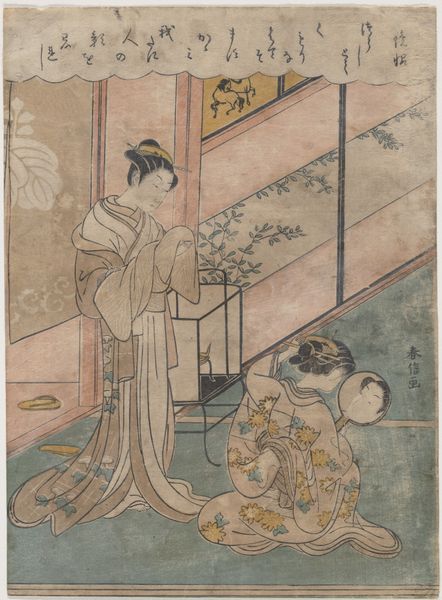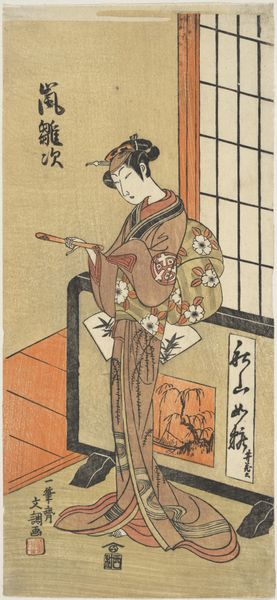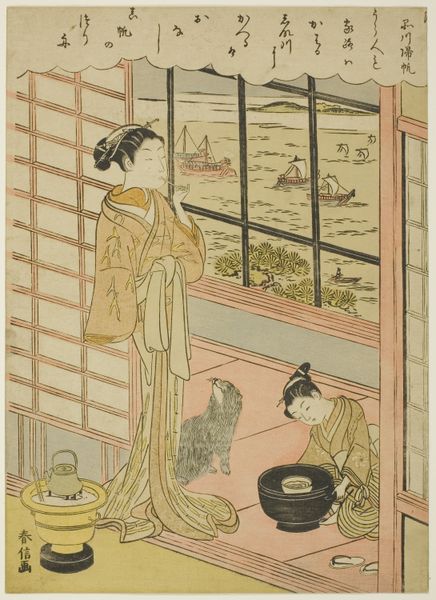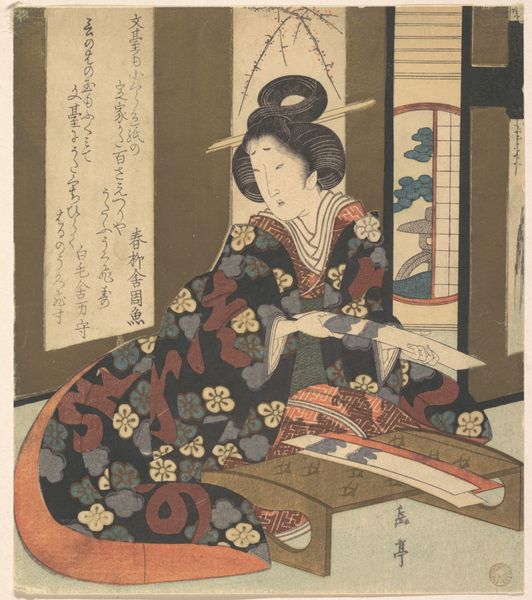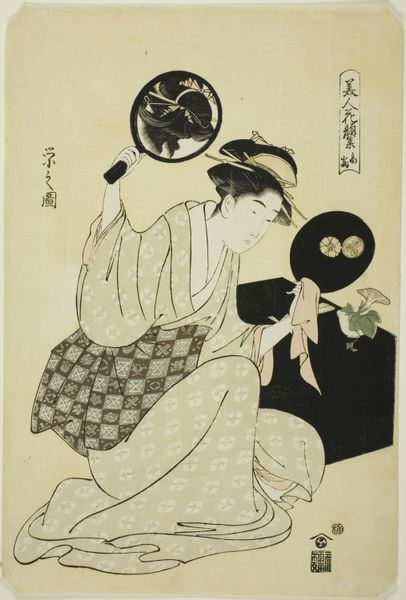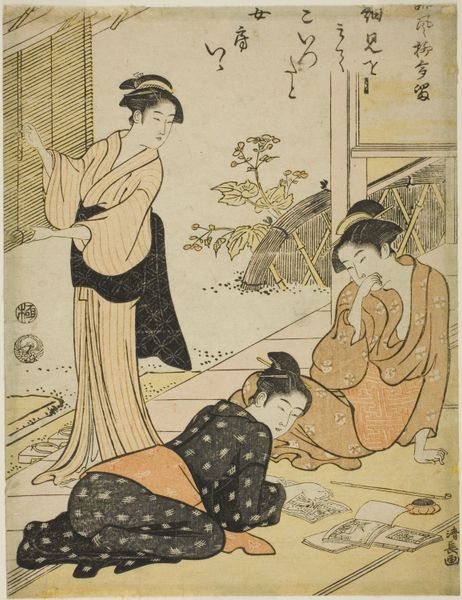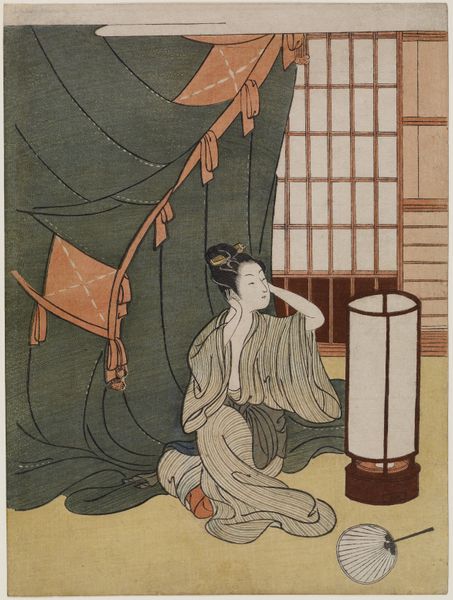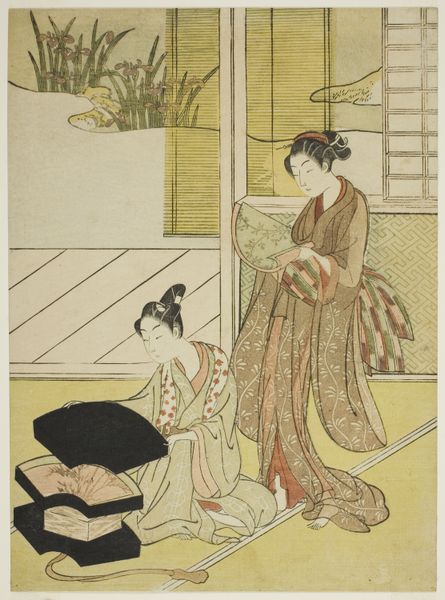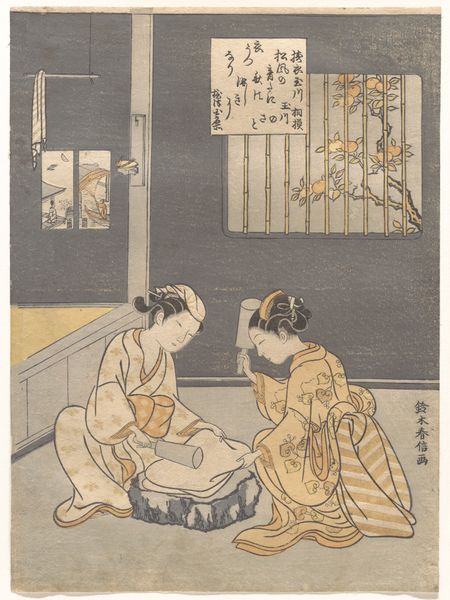
# print
#
asian-art
#
caricature
#
ukiyo-e
#
figuration
#
line
Dimensions: 26.1 × 20.4 cm (10 1/4 × 7 7/8 in.)
Copyright: Public Domain
Curator: What a quietly beautiful scene! "The Love Letter," a print made in 1765 by Suzuki Harunobu, draws us into a private moment in what appears to be a serene interior. What’s your take on first glance? Editor: Well, I'm struck by this pervasive melancholy. There's a stillness here, a hush that’s almost tangible. Are those really love letters, or are they bills overdue? Jokes aside, it’s quite intriguing how the weight of unspoken feelings seems to permeate the composition. Curator: It's Ukiyo-e, so we’re definitely invited into a very specific slice of Edo period life, filtered through the artist's own perspective of the fleeting pleasures of life. Visually, those flowing scrolls emblazoned with delicate script add an incredible graphic dynamism against the almost geometric interior setting. Editor: Those scrolls immediately signal something significant is happening here, don't they? Love letters are powerful symbols of intimacy, yearning, and, let’s be honest, vulnerability. Consider how writing itself, in its various forms, can reveal hidden cultural attitudes around things like desire and power! In a world where communication was less instantaneous, a letter must have had such enormous weight. Curator: Harunobu was a master of rendering line—the sensitivity, and the pure technical ability, just leap out at me. Notice too how he captures such detail: in their hair, in their clothes, even in the slightly claustrophobic interior of their home. All brought to life through flat planes of vivid, beautiful color! It's interesting also how this quiet domesticity feels charged, like a little theater with everything pregnant with narrative. Editor: And even a sense of ritual! In many cultural narratives, the moon is this enduring symbol of cycles, femininity, mystery… It hovers right behind them. Does this signal a sort of transformation occurring, maybe related to the romantic missives, in this private world of feminine discourse? Perhaps Harunobu implies these missives reach into a deeply hidden sphere, full of both possibility and danger. Curator: Looking at "The Love Letter," I sense an echo of these stories, those fragile yet tenacious expressions of hope and affection amidst life's bigger narrative. Editor: Absolutely. We see how intimate and meaningful writing and receiving a letter once were and how symbolic, loaded with emotional weight, it was as part of culture’s visual vocabulary.
Comments
No comments
Be the first to comment and join the conversation on the ultimate creative platform.


